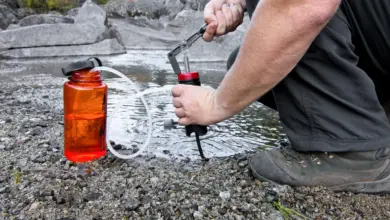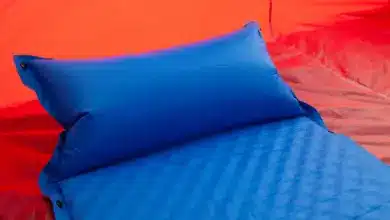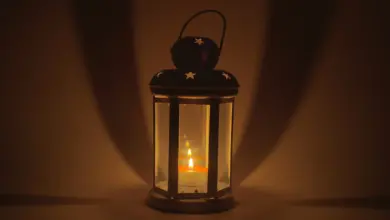6 Things You Should Know About Choosing A Winter Campsite
Choosing a winter campsite can take some time. Keep in mind that days are shorter in winter, so choosing a campsite ideally should be done early enough so you can find a site and also set up camp. Give yourself more time than you think will be necessary. Scouting out potential campsites on a map before your trip may save some time.
Here are a few factors to consider when choosing a winter campsite:
#1. Scenery
The scenery can make for an awesome experience when camping. Waking up and seeing fresh snow, a lake, or a mountain top with the sun shining in the morning can be inspiring and make for some great photo shoots.
#2. Wind
Wind offers a few dangers. A strong wind may blow your tent away or send dead branches and trees crashing toward the ground. Always look up for dead branches before setting up camp. Sturdy trees and rock outcrops can provide shelter from the wind.
There are a few signs that can indicate locations have frequent wind. Hard, sculpted snow that is brittle is one indicator of wind. Another indicator is loose powdery snow, as it means the wind has deposited the wind there, which could cover your tent during the night.
#3. Avalanche risk
If you are camping on or near a slope, consider the avalanche risks before setting up.
You may also like How To Make Your Winter Sleep System
#4. Temperature
Cold air will settle in depressions such as valleys, and camping in lower spots will be colder. Avoiding these areas will avoid the cold. Consider a location where the sun will be shining in the morning. Being in the shade versus being in the sun when you first wake up will make an enormous difference.
#5. Water
Having a water source close by will make gathering water for drinking and cooking much more convenient. Fast-moving streams are unlikely to freeze. If there is a water source that is frozen, you can break through the ice using a hatchet or ice axe. And if the water source is frozen solid, ice will yield more water than snow.
#6. Level ground
In the winter, you can camp on either the bare ground or the snow. If you camp on the snow, you can flatten out the snow or dig down into the snow using snow shovels and snow saws.
You may also like Your Complete Guide To Yurt Camping
Final Words
When you are choosing a site, you may not find everything you are looking for, but it’s important that you are both safe and comfortable.
Photo credit: Arijit95jitu on Wikimedia / CC BY



